Stepping inside the herbarium of Andhra University’s (AU) Department of Botany is like embarking on a journey that unravels the mysteries of the plant world. Here, plant species, most of which are decades old, are revered, conserved and considered as a gateway to understanding the crucial elements of geography and climate change.
This herbarium, the only one in Andhra Pradesh, received international recognition in 2017 after it found a mention in the world list of herbarium by the Royal Botanic Gardens KEW in UK.
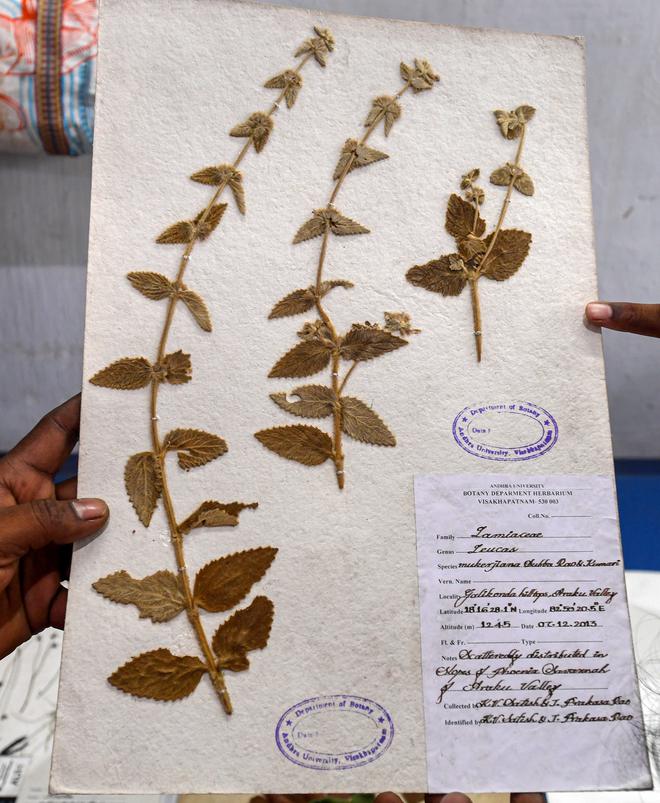
Stored in its various cabinets is a vast collection of preserved dry plant specimens maintained for scientific study. Each specimen has handwritten notes with its name, the date of collection and the collector’s name with field notes about its location. “The plant specimens are a critical link to the past. They also record the damage done by climate change to the world of flora, for instance, changes in flowering time, and holds the secrets to the future,” says Prakasa Rao Jonnakuti, post doctoral fellow of Department of Botany, Andhra University.
In 2017, Prakasa along with another researcher stumbled upon a new plant species in the Eastern Ghats called Emilia reddyi, which is one among the many collections of the herbarium. “In 2022 our team also discovered another new species Pancratium venkaiahii that belongs to the family Amaryllidaceae,” says Prakasa. The herbarium houses many such wonders. One such is an intriguing collection of algae, some collected from the Visakhapatnam coast in the 1960s.
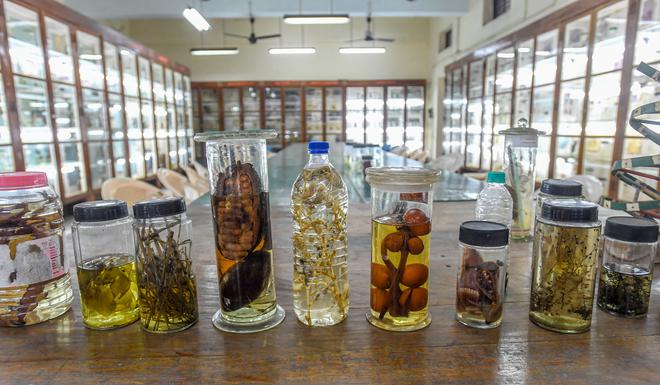
The herbarium, a museum and a botanical garden at the AU’s Department of Botany are now open for guided visits for the public as part of a project initiated by the Andhra Pradesh Forest Department, Visakhapatnam Division, in association with the NGO Wildlife Conservation Through Research and Education (WCTRE). The project named People Biodiversity Register (PBR) is aimed at engaging with the public through visits to places that houses critical database of biodiversity including flora and fauna of the region. The citizen science initiative is being undertaken under the guidance of Anant Shankar, Divisional Forest Officer, Visakhapatnam, and Nandani Salaria, curator of Indira Gandhi Zoological Park.
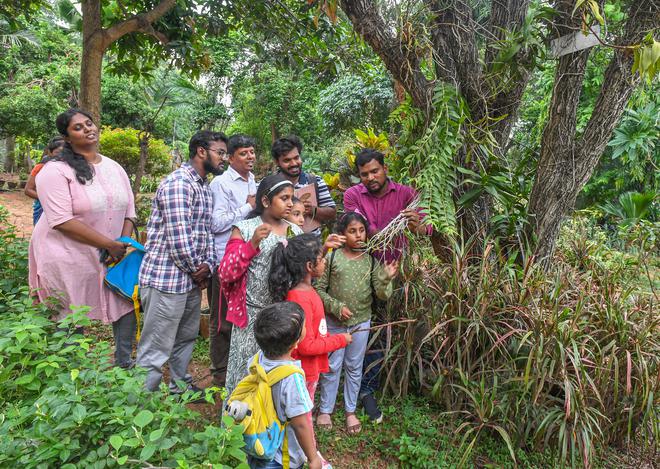
“The aim is to involve the people of Visakhapatnam in creating a biodiversity database of flora and fauna not only in protected areas or forests but throughout the city,” says A Yagnapathy, Project Scientist, Kambalakonda Wildlife Sanctuary. As part of this, Yagnapathy along with the team of WCTRE has taken three groups of people for guided walks to the Department of Botany and the museum at the Department of Zoology in Andhra University.
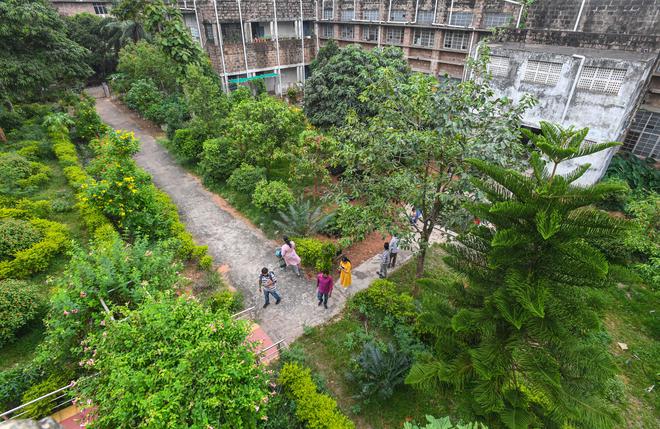
The Botany department’s museum, adjacent to the herbarium, is systematically categorised in sections like algae, fungi, bryophytes, economic products (from plants), mangroves of Andhra Pradesh, Indian timbers, fossil section and one on rare and endangered species, among others. Here, the specimens are preserved in a solution of formaldehyde and water. “An interesting part of the museum is the fossil Pentoxylon. It was collected by Prof Birbal Sahni in 1948 from the Jurassic-Cretaceous strata of the Rajmahal Hills of northeastern India,” says Prakasa. The Botany Department’s Botanical Garden is spread across a five-acre area, housing more than 600 plant species.
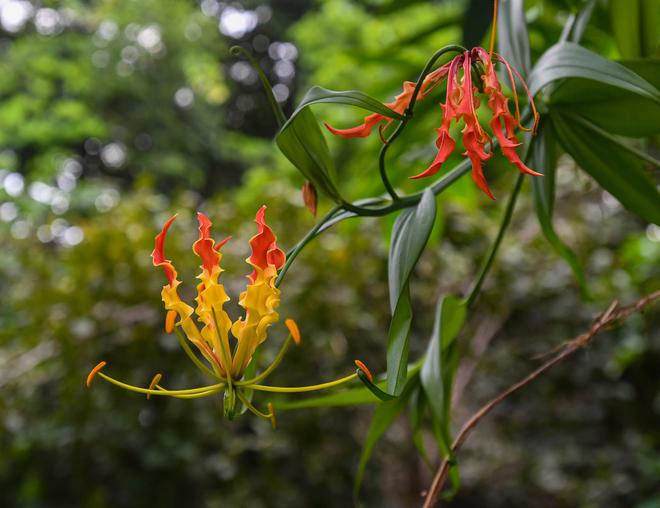
Every year thousands of students and researchers visit the AU Botany Museum, Herbarium and Botanical Garden to understand the secrets of the plant world. “During our guided visits, participants get an introduction to native flora and fauna, which in a way will help them identify species in and around them that can be documented in social network for biologists and citizen scientists like iNaturalist. This documentation will not only be an important database of biodiversity from Visakhapatnam region, it will also create environmental awareness at a time when the world is witnessing tangible impact of climate change,” says Vivek Rathod of WCTRE.
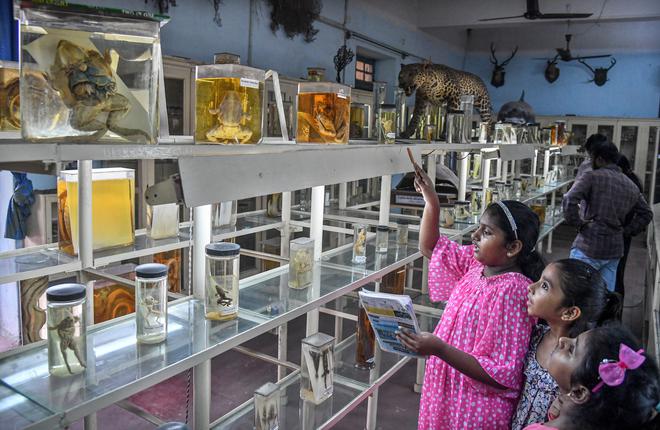
The imposing skeletons of a 27-foot-long calf of a baleen whale and the skull of an adult baleen whale give the first glimpses of what is in store at the museum of the Department of Zoological at AU. Here, the exhibits range from herpetofauna (reptiles and amphibians of a region), whales and sharks, including taxidermy, skeletons and fluid-preserved specimens. “Most of the preserved specimens are from the university campus itself,” says Yagnapathy. The reptile section has specimens of venomous species like Russell’s viper and cobra, species that are protected by law under Schedule II of the Wildlife Protection Act, 1972.
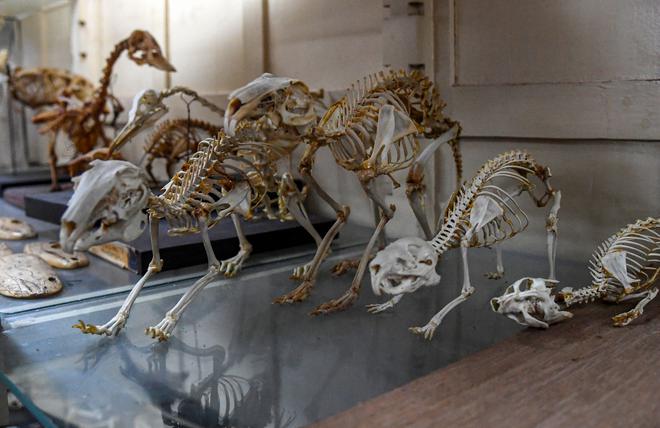
Among the interesting sections is the one on taxidermy which houses a vast collection of birds from Visakhapatnam and Eastern Ghats. Taxidermy deals with the preparing, stuffing and mounting the skins of animals with lifelike effect. Some of the exhibits here are said to have been given by India’s revered ornithologist late Salim Ali during his visit to the region in the 1980s along with ornithilogist KSR Krishna Raju, who worked extensively in the Eastern Ghats of Vishakapatnam.
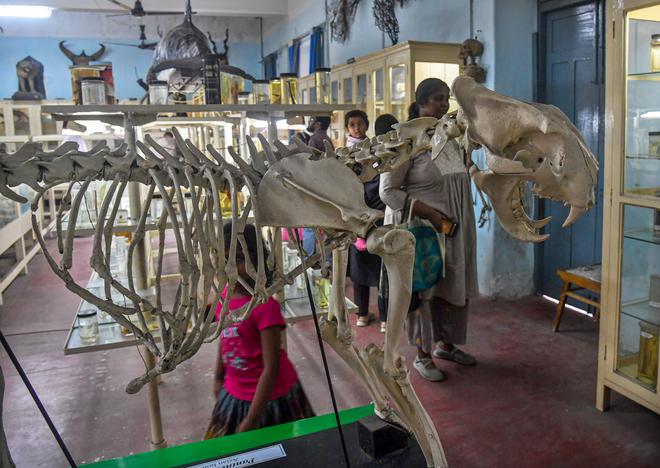
Artist Anita Rao, who visited both the departments during the guided walks, says: “This place can be described as a treasure trove. All those animal species of the wild, the canopy of the botanical garden, lend us an insight into how Nature would’ve been in the spaces encroached by humans.”
Gayathri Sreeramani, who participated in the walks with her children, says,“They were quite at home with the vastness. When the fossils were presented, my nine-year-old was quick to make the connection with the era and the dinosaurs,” she adds.
(To participate in the guided walks, call 9052797234 or 6262344922)







